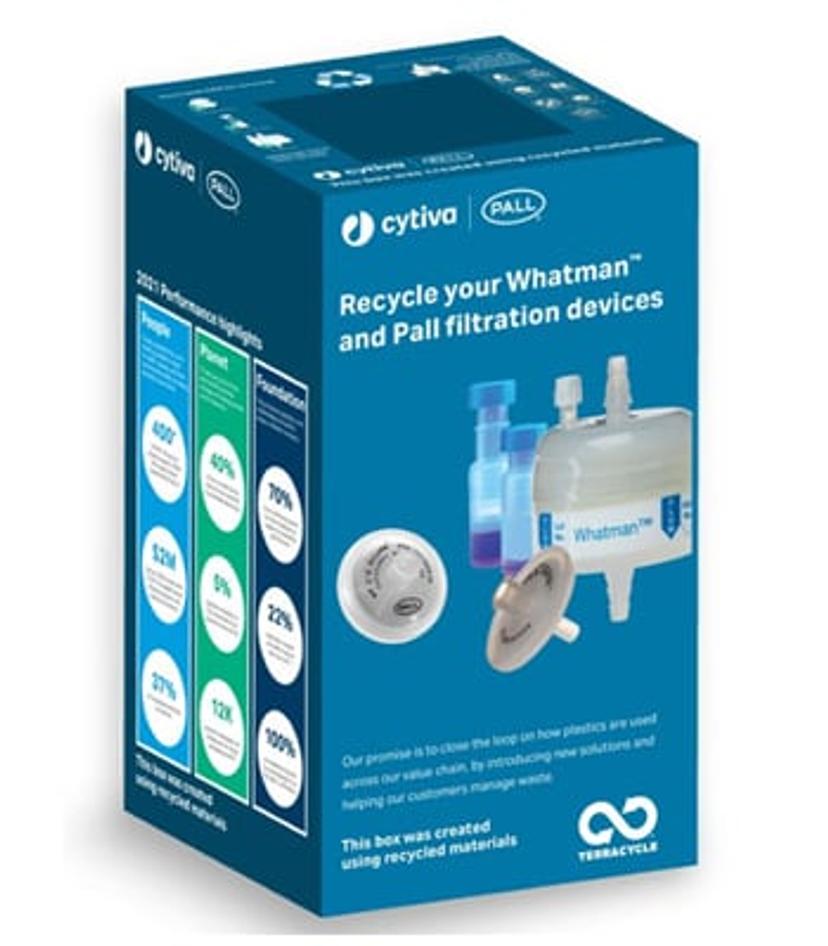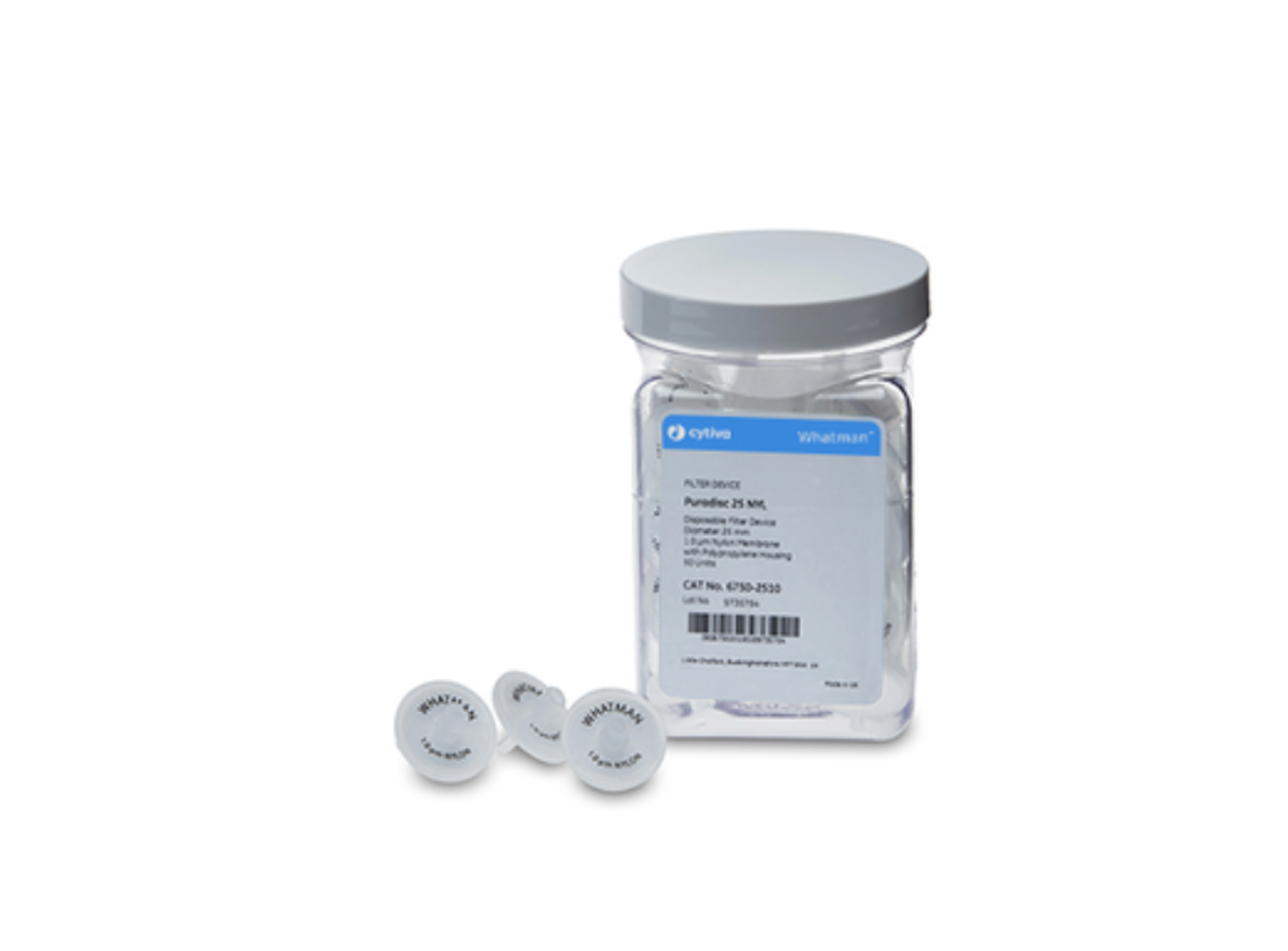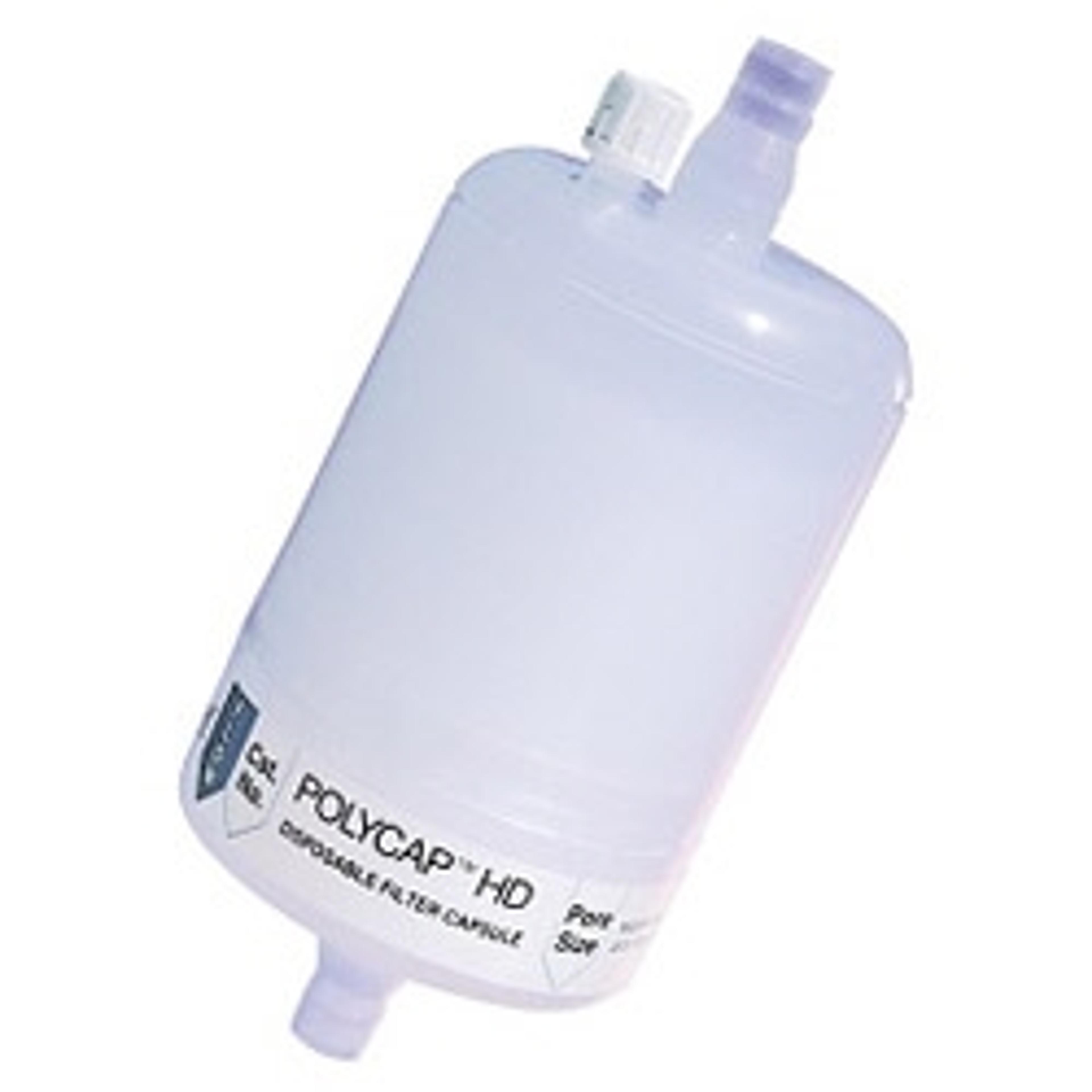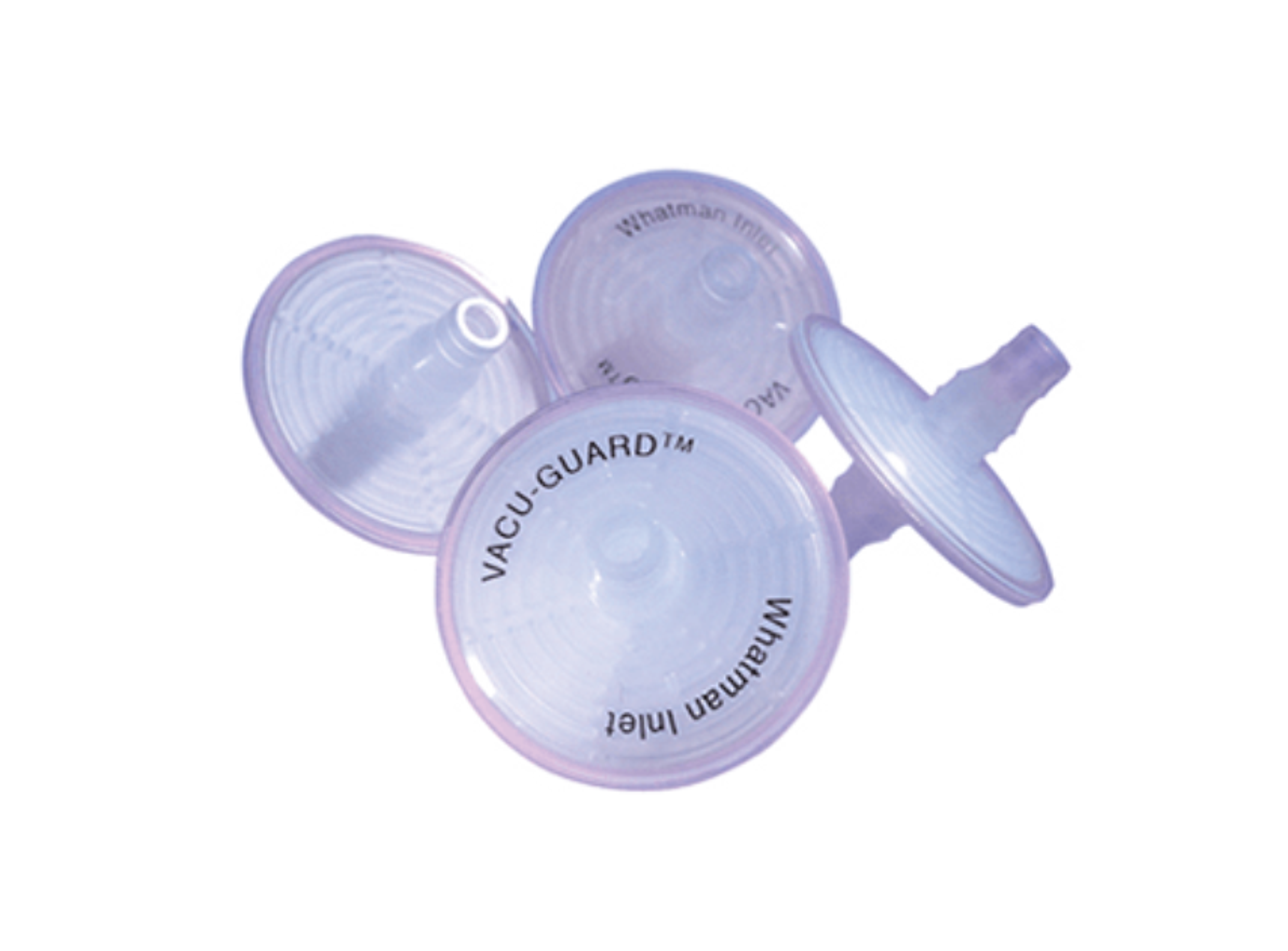Lab sustainability: Industry first recycling scheme reduces the environmental impact of filtration
Find out how a partnership between Cytiva and TerraCycle is helping laboratories reduce the environmental impact of their filtration
30 Apr 2023

Efforts to reduce the environmental impact of single-use plastics in the laboratory have become of increasing importance in recent years with many organizations now setting annual targets to achieve their lab sustainability goals. Filtration plays a vital role in many laboratories and is a key step in sample preparation workflows, however, filtration devices represent one of the largest contributors of single-use plastic waste in laboratories.
In this interview, we speak with Dan McElroy, Senior Global Product Manager, Lab Filtration at Cytiva, about how Cytiva is working together with international recycling company, TerraCycle®, to enable scientists to recycle previously unrecyclable filtration devices. McElroy also explains how the company’s adoption of the ACT label forms part of its initiative to provide clear, third-party verified information of the impact its products have on the environment to help scientists better understand and improve their lab sustainability.
The importance of filtration in the pharmaceutical lab
Filtration forms a key step in many processes, usually as part of a sample preparation procedure. Pharmaceutical laboratories routinely use drug dissolution during quality control testing to assess the consistency of pharmaceutical products before release. The right filter will remove undissolved analyte as well as any impurities from the sample prior to analysis. Single-use products such as filtration devices also provide sterility, this is particularly important in the pharmaceutical industry where any ambiguity in results may delay batch release. “When you reuse a filter, you risk cross-contamination into your sample which can affect your downstream processes,” explains McElroy. “Options for most labs to dispose of their used filters were to send filtration devices off to landfills or incinerate them. Re-using filters in a pharmaceutical lab will compromise the integrity of your sample.” To help laboratories meet their sustainability goals, Cytiva has partnered with TerraCycle. “We chose to partner with TerraCycle as an established global provider of recycling services,” says McElroy. “No one on the market has recycled syringe filters before and what attracted us to TerraCycle was their focus on recycling the unrecyclable.”
Achieving zero waste with your filtration
With the introduction of this scheme laboratories can now recycle filtration devices and effectively reduce the amount of single-use plastic that is going to landfills.
Dan McElroy
Cytiva
Cytiva and TerraCycle utilize a Zero Waste Box™ to provide a solution for difficult-to-recycle filters that are not accepted by standard recycling programs. “You simply put your used syringe filters into a pre-labeled box that TerraCycle ships to you, when the box is full this is then shipped back to the nearest TerraCycle Material Recovery Facility. Once collected, the filters will be recycled into new recycled products like park benches, plastic lumber, and more,” explains McElroy. “Customers will receive a ‘Recycling Certificate’ so they can add this data to their recycling or landfill waste reduction goals. With the introduction of this scheme laboratories can now recycle filtration devices and effectively reduce the amount of single-use plastic that is going to landfills or being incinerated.”
Many laboratories are seeking green approaches such as the TerraCycle scheme, but it is not always easy to know whether these will be suitable for their needs. “At Cytiva our goal is to work with scientists to understand their needs and help identify laboratories that will benefit from the program based on their sample type and throughput,” says McElroy. “Our program with TerraCycle focuses on polypropylene and polycarbonate-based devices which the majority of Cytiva’s device portfolio is made from. We cannot accept any biological or hazardous waste material, laboratories that are working with non-hazardous, non-biological waste could be suitable for the scheme.”
Implementing sustainable schemes into your lab can be daunting. McElroy offers the following advice to scientists looking to embrace greener practices, “The goal is to understand where you are currently, then identify opportunities to become more sustainable that can easily fit into your current workflow or your ordering patterns. Look at what that first step is for your lab and understand which vendors you can partner with to help you get to your goals that much faster.”
Transparency on environmental impact

To further assist laboratories in making greener choices, Cytiva has now registered 30 products with the ACT Environmental Impact Factor label from My Green Lab®. The ACT (Accountability, Consistency, and Transparency) label provides scientists with an indication as to the environmental impact of the product they are using – called the Environmental Impact Factor (EIF). Products certified with the ACT label are independently audited and published by My Green Lab to allow for fair comparison between products. “The ACT label looks at certain attributes of a product such as manufacturing impact, packaging, shipping, etc., and empowers the scientist to be able to decide to purchase a product or not, based on the environmental impact of that product,” explains McElroy. “We are the first company to offer a recycling program for filtration devices and are now the first company that has also offered ACT labels specifically for syringe filters.
Impacting the future of sustainable lab filtration
With the introduction of its recycling program, Cytiva has taken significant steps in enabling laboratories to take environmental stewardship. “We've now expanded the TerraCycle program to seven countries. We want to be able to continue to offer the lab-scale recycling program and expand this to other countries as well as laboratories working with biological hazards. There's a lot of legal and regulatory hurdles, but by working with vendors such as TerraCycle we are hoping to continue to expand our offering,” says McElroy.
Increasingly, laboratories are starting to integrate environmental impact evaluations into their buying process. McElroy concludes, “We are proud to provide transparency on the environmental impact of our products with the introduction of ACT labeling. In the future, we'd like more of our products to have an ACT label to help users wanting to understand the environmental impact of their research.”



